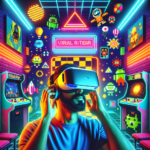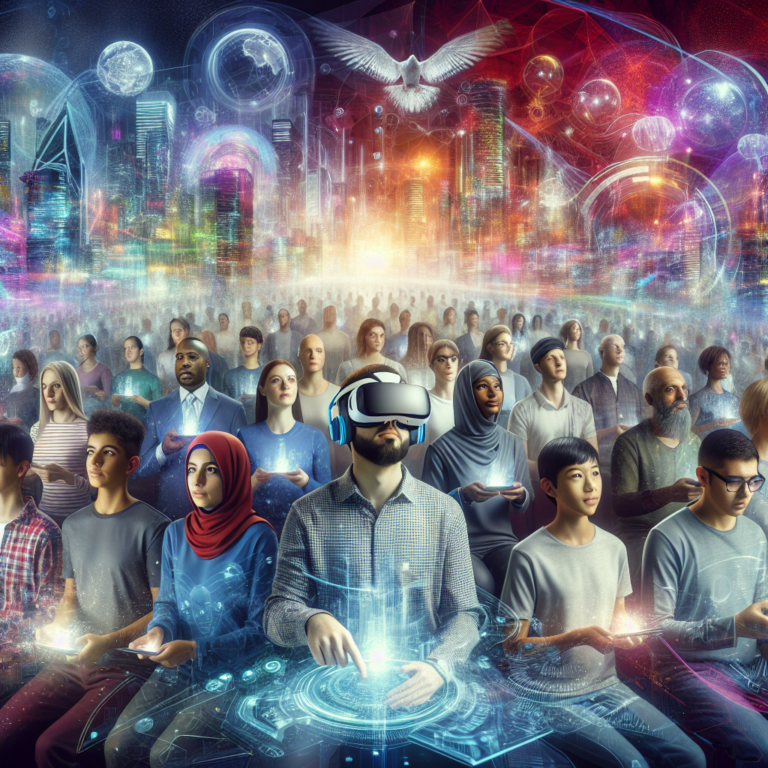Meta’s New Vision: How Mixed Reality (MR) is Transforming Virtual Experiences
Decoding Meta’s New Definition of Mixed Reality
Recently, Meta has redefined its meaning of mixed reality to include both mixed reality (MR) and virtual reality (VR). This transformation signals a significant change in how the company views its technology and interacts with its audience.
Meta’s chief technology officer (CTO), Andrew Bosworth, made this clarification earlier this month on X, addressing a comment from respected developer John Carmack. Carmack criticized Meta for its focus on mixed reality and its goal of blending virtual elements with real-world settings. In response, Bosworth emphasized that “MR” now signifies a fusion of MR and VR, encompassing the entire Quest lineup along with Horizon OS and its diverse content offerings.
“We use MR instead of MR/VR now. The term covers both for us internally.” — Boz
Shifts in Marketing and Communication Strategies
This revised terminology is becoming increasingly clear in Meta’s marketing materials. Notably, the Quest section on Meta’s website has started to reduce mentions of “virtual reality.” For instance, product pages for devices like Quest 3 and Quest 3S seldom use the term “VR.” The only instance found is in the promotion for Batman: Arkham Shadow, which is touted as “fully immersive VR,” while also being positioned as a mixed reality experience.
Meta’s descriptions of Quest headsets are shifting as well, as “VR” is replaced with the phrase “immersive experiences.” This change suggests a broader perception of what users can expect from their VR devices.
Illustrating New Language with Current Examples
A recent blog post from Meta, titled “Step Into Quest: Embrace the Wonder of Mixed Reality With These Immersive Games,” demonstrates this evolving language. Out of the twelve games highlighted, eleven provide a fully immersive VR experience without a passthrough interface. This inconsistency raises questions about Meta’s definitions and could lead to consumer confusion.
- Developers can currently sign up across various categories, including:
- AI developers
- Augmented Reality developers
- Mixed Reality developers
- Other
- However, there is no category for virtual reality, reinforcing the idea that Meta now considers it part of the broader mixed reality landscape.
Responses from Users and Developers to Terminology Changes
The transition to using “MR” as an umbrella term has elicited mixed reactions from developers and Quest users. Many find the new terminology somewhat puzzling, questioning if Meta refers to mixed reality in an all-encompassing context or specifically to content utilizing passthrough technology. This vagueness complicates the understanding of Meta’s communications.
Some developers have suggested adopting “XR” (extended reality) for a more inclusive term that would cover the full spectrum of technologies. However, they recognize that XR encompasses transparent augmented reality from glasses, which distinguishes itself from the Quest and Horizon OS offerings. As a result, Meta has chosen to stick with “MR” as a specific term to represent its mixed reality and VR characteristics.
Leadership Transitions and Their Implications
In conjunction with the changes in naming conventions, there have also been shifts in leadership at Meta. Mark Rabkin, the vice president of MR/VR, is set to resign in March due to family health issues. While a successor has yet to be identified, it is likely they will be appointed with the new terminology in focus, reflecting a clear direction toward mixed reality.
Looking Towards the Future of Mixed Reality
As Meta aims to refine its messaging and product categories, it seeks to clarify its role in the fast-evolving world of immersive technologies. The embrace of “MR” as a broad term promotes a cohesive understanding of its platforms and offerings. Furthermore, as the interactions among these technologies progress, Meta must maintain clear and consistent communication with its users and developers.
This development marks a pivotal change in how the tech giant perceives and operates in the virtual realm. With more immersive experiences on the horizon, the blending of MR and VR could lead to innovative applications that enhance user engagement and broaden market reach.
By redefining mixed reality, Meta not only aligns itself with prevailing technological trends but also prepares users for a richer immersive experience. This strategy underscores the company’s belief that the future of technology lies in merging virtual environments with reality.
Despite the potential benefits, the growing confusion surrounding the terminology poses a challenge. As Meta evolves, it must carefully navigate how it communicates these concepts to ensure clarity for both consumers and developers. This focus will be essential in promoting the successful adoption of mixed and virtual reality content.




0 Comments